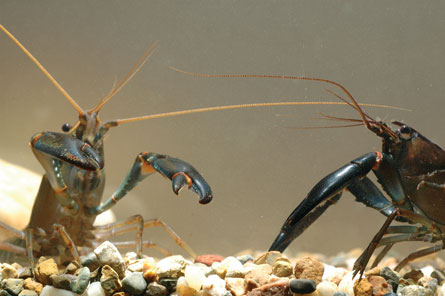- More than 2 years ago
When it comes to male crayfish, not all claws are created equal. In these crustaceans, the left and right claws might be very different sizes — and the larger one isn’t necessarily stronger, researchers report online March 14 in Biology Letters.

This deceptiveness could help crayfish bluff or trick an opponent during a fight, says study coauthor Robbie Wilson, a biologist at the University of Queensland in Brisbane, Australia. What’s more, the findings suggest that within a species, “dishonesty occurs in nature more commonly than we expect,” Wilson says.
During a clash, a male crayfish sizes up his opponent when deciding whether to fight or flee. Previously, scientists found that stronger, smaller-clawed crayfish would back down from weaker, larger-clawed opponents. So, it was clear that some bluffing occurred between these crustaceans.
In this new work, Wilson and his colleague Michael Angilletta Jr., of Arizona State University in Tempe, compared claw size and strength in the slender male crayfish, Cherax dispar, a species native to Queensland. By having crayfish squeeze down on instruments that resembled tweezers, researchers could measure the force exerted by individual claws.
In some cases, one limb of an animal with equally sized claws was much stronger. In other cases, a crayfish’s larger claw was weaker compared to the other, smaller limb.
This deceiving size and strength in a male crayfish’s two claws might provide an advantage during combat, says Wilson. A fighter might fake weakness by waving a larger, feeble limb, all the while having the other claw — a secret, small weapon — tucked away.
The study authors suggest that dissimilarities in claw size and strength might stem from the fact that the creatures can regrow new claws after injuries.
If these crustaceans are deliberately taking advantage of dishonest signals, like using large, weaker claws to pick a fight, it could tell scientists a lot about how dishonesty develops in nature, says Sophie Mowles, a biologist at the University of Nottingham in England. This work “could kind of give us a window into dishonesty and the evolution of bluff and cheating,” Mowles says.






